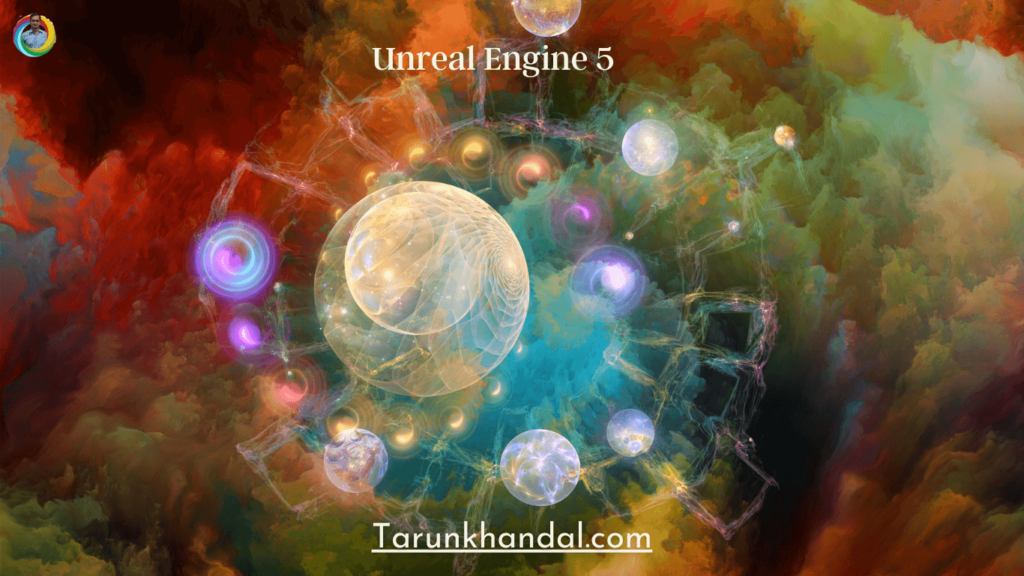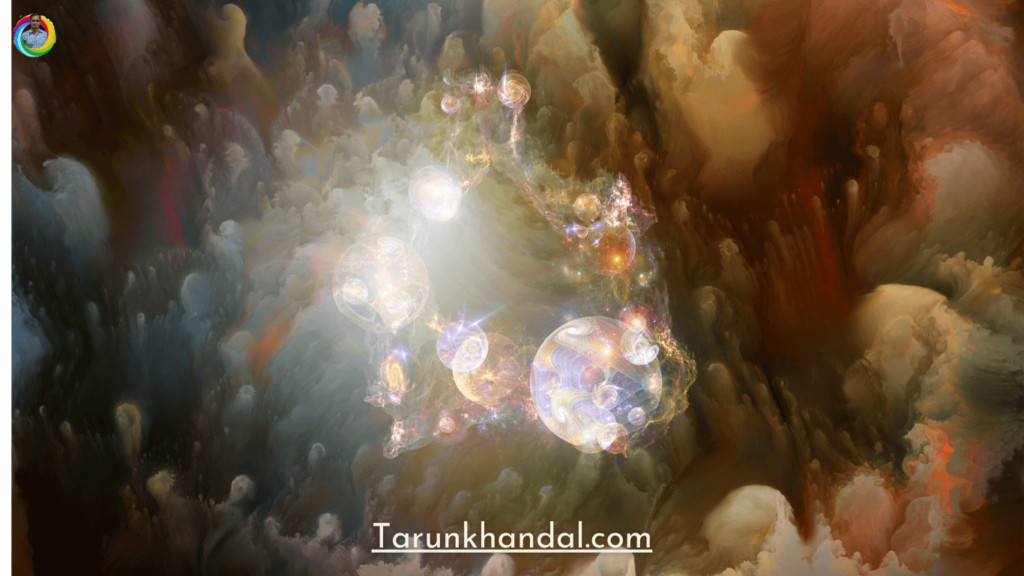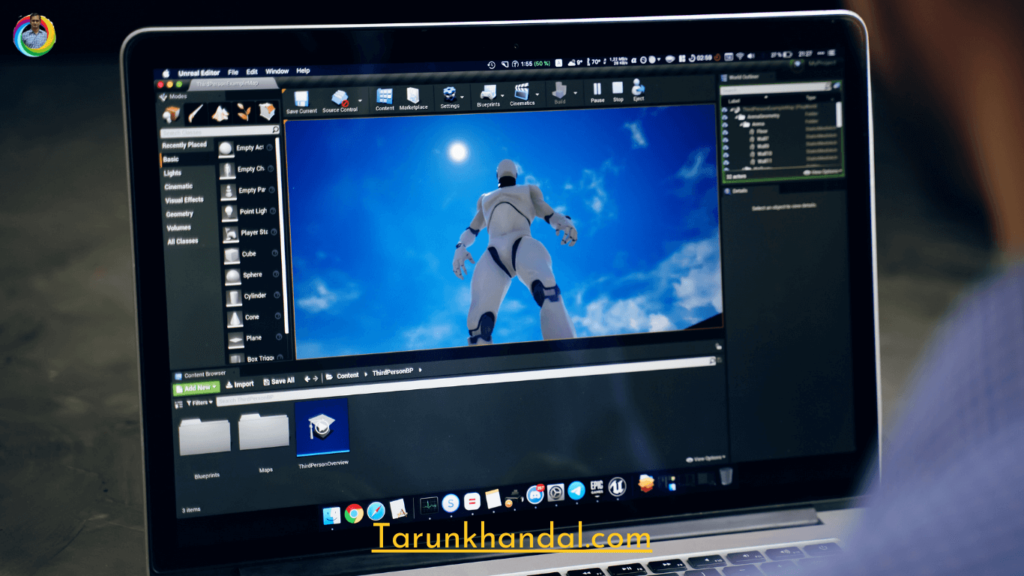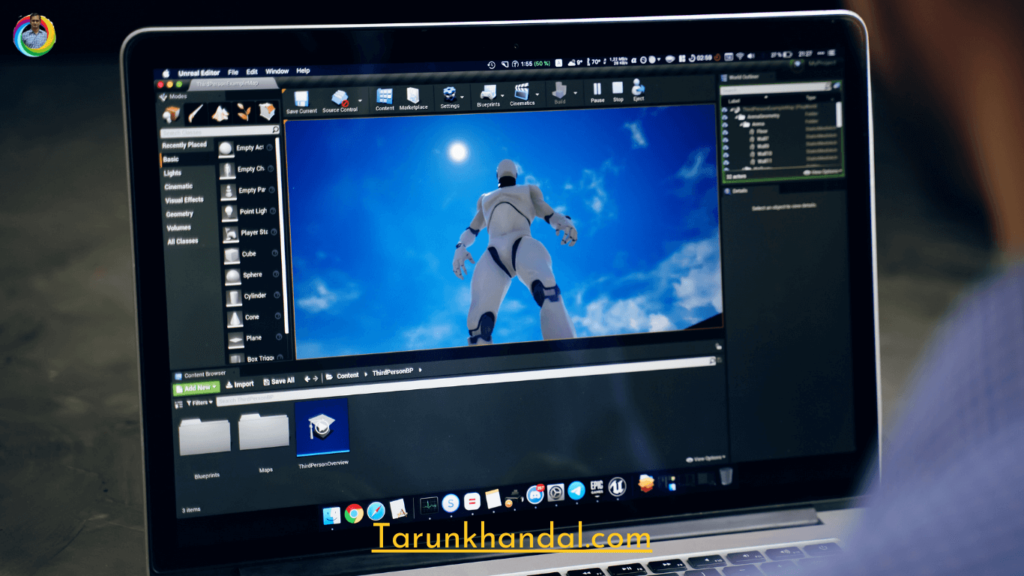The Unreal Engine 5 is an exciting game engine that uses real-time rendering and dynamic illumination technology to bring game characters and environments to life. In the last few years, the engine has been used in games, TV shows, and movies. HBO’s “Westworld” and Disney’s “The Mandalorian” both use Unreal Engine. It has also inspired a new wave of companies to use game engines to visualize the early rough drafts of films. Recently, Epic has made an aggressive push into Hollywood, buying companies like Capturing Reality, ArtStation, Sketchfab, and others to build computer graphics teams.
Dynamic illumination technology
Dynamic illumination technology in Unreal Engine 5 enables developers to create virtual environments with fully dynamic lighting. Its technology is similar to what advanced computers use to generate high-quality graphics. It will save users a lot of time, especially in the light-adjustment process. Additionally, they won’t need to wait for light maps to bake. This will allow users to place light sources right in the Unreal Editor and see the effects in real-time.

This new technology can be very helpful for game developers. This technology helps reduce the complexity of the scene by automatically reducing polygons on objects as they move away from the camera. The reduction in complexity of the scene will also decrease the developers’ workload. These are just some of the great improvements in Unreal Engine 5.
Dynamic illumination technology in Unreal Engine 5 includes both software ray-tracing and hardware ray-tracing. Screen space global illumination is an example of this. It is a cost-effective way to create global illumination for your scene. However, it should be kept in mind that it is best used in combination with existing methods. Another option is Brute Force, which emulates indirect lighting but takes longer to render. Finally, Final Gather uses a two-pass algorithm to distribute shading points throughout the scene. This technology also allows for dynamic lighting of dark areas in your scene.
Rendering in real-time
When rendering in real-time in Unreal Engine 5, you need to be aware of your resource limitations. The number of draw calls is limited and the number of projects you’re running will influence your rendering time. Also, you need to consider the amount of bandwidth available on the target platform. There are different ways of managing these losses. One option is to reduce the number of projects you’re working on.
The best way to do this is to use a high-performance rendering pipeline, such as the one offered by Unity. In Unreal Engine 5, you can use a high-performance system called MetaSounds. This allows you to manage every aspect of your audio rendering. This feature is analogous to using a fully programmable material and rendering pipeline. It also allows you to map game parameters to sound playback, which will improve your workflow greatly.

When you’re using Unreal Engine, you can view the size of each asset by looking at its Size Map. This will give you a clear view of the relative memory use of each asset in your game. You can access this window by right-clicking the folder in the Content Browser. You’ll see icons that represent the amount of space each asset is using. Larger icons consume more memory.
Commercial use
While Unreal 5 is still mostly used for gaming, the engine also has a host of commercial applications and projects. Both engines support nearly every major platform, with the exception of Android TV. Unity was originally built for mobile apps, and its optimizations are more appropriate for smaller games with modest processing requirements.
Epic Gaming is charging 5% royalties for commercial use of the engine. Many companies, including HBO, are already using the engine in early development. Unreal Engine is also being used in BioWare’s next Mass Effect game and CD Projekt Red’s follow-up to The Witcher 3. Epic is aiming to sell the technology as a “virtual production” platform and is putting its money where its mouth is.
Commercial use of Unreal Engine 5 is permitted with the right licensing terms. While Epic does not charge a monthly fee for commercial use, it does require that developers pay a 5% royalty on sales over $3,000. UE also offers a variety of paid plans.
Unreal Engine 5 Tutorial
Unreal Engine 5 is a game engine that allows developers to create 3D games in a computer environment. The new version of Unreal is available in beta form for a limited time, but it will be many years before you can find games built on it. The new release is slated for 2023, but some major titles are not yet ready for this timetable. Regardless, the launch of Unreal Engine 5 will be a huge milestone for developers, as it will pave the way for the next wave of games. In terms of realism, it could be a leap ahead of previous games.
Path Tracer
Path Tracer is a renderer for Unreal Engine 5 that can be used to generate shaded images. Its settings are located in the Post Process Volume Details panel. The PathTracing category contains several settings that you can change to customize your path tracer. For example, you can adjust the number of bounces each ray will have before it terminates and the number of samples per pixel that will be used to calculate convergence. These settings can help you achieve better results by reducing noise in your rendered image.
Path Tracer is a shader that takes advantage of the post-processed depth of field. However, it inherits limitations regarding translucent materials. It is recommended to use the Movie Render Queue for rendering final images. Additionally, it is recommended to enable the Evaluate World Position Offset option on each scene Actor.
The Path Tracer for Unreal Engine 5 tutorial is created by William Faucher, a 3D artist who has been working in the industry for over a decade. He has worked on numerous professional projects, including Marvel’s Black Panther and HBO’s Watchmen. He also creates educational content for YouTube and consults with studios on developing Unreal-based pipelines.
Path Tracer for Unreal Engine 5 is a hardware-accelerated rendering mode that samples pixels in an image. This enables Unreal to produce results that are as realistic as possible. In addition to this, Path Tracer also calculates lighting in the same way as it does in real life. While Path Tracer has been available in previous versions of the game, it was missing some key features. Fortunately, Unreal now supports it.
Path Tracer for Unreal Engine 5 does have its shortcomings, but it shares ray tracing architecture with Unreal Engine. As a result, Path Tracer for Unreal Engine 5 requires minimal setup and is capable of producing high-quality renders that rival offline renderers.
New Lighting System
In Unreal Engine 5, the lighting system has been greatly improved. The Lumen lighting engine and real-time global illumination have both been introduced, providing the user with a wide range of tools, techniques, and workflows. This tutorial, recorded by VR artist Charleston Silverman, will walk through the basics of the new lighting system in Unreal. This course will also provide an overview of the different tools and techniques used to create realistic and appealing lighting.

The Lumen dynamic global illumination system is the new lighting system for Unreal Engine 5. This system was developed by Epic Interactive, a company that has worked on rendering video games for over a decade. It believes that next-generation games will require advanced lighting systems that react to the changing world in real time. Real-time global illumination is considered to be the “holy grail” of computer graphics.
The Lumen lighting system uses real-time, dynamic lighting, instead of raytracing, which required a high-end computer to operate. This new lighting system makes baking lighting a thing of the past. The sky is also now rendered with sky shadowing, allowing for more realistic lighting effects.
New UI and streamlined workflows: The new UI and editor are much more convenient than the UE4 editor. You can now easily access different features, including a new modeling mode, sculpting tools, and UV unwraps tools. The new modeling mode allows you to tweak assets with ease and speed.
Improved Workflow
Unreal Engine 5 offers a host of new tools to make the development process easier and more efficient. Its new World Partition system will render sections of the game world only when needed. It also offers One File Per Actor support so that multiple developers can work on the same area of the game world at the same time. Other improvements include a new user interface, more intuitive menus, and quality-of-life enhancements.
The Unreal Editor is now equipped with improved mesh modeling and UV editing tools. These tools make it easier for artists to develop their assets in the Editor, especially when they’re dealing with dense meshes. The tools have a streamlined workflow and a new design that makes use of screen real estate efficiently.
The Unreal Engine 5 is the fifth release of the game engine developed by Epic Games. This powerful new toolkit allows developers to create the next generation of real-time 3D experiences. Whether you’re creating a video game or a simulation, this engine has the tools to help you create stunning and immersive worlds. Its features and workflow are already proven in popular games like Fortnite and The Matrix Awakens.
In Unreal Engine 5, developers can create complex game worlds faster than ever before. New tools like the World Partition System make the process easier and more efficient. With Data Layers, developers can create zone variations in the game world. Another new feature is the One File Per Actor System. This system allows developers to work on separate regions of the map without having to share assets. In addition to this, the Control Ride animation tools make it easier to share and manage character rigs, save poses and create natural-looking movements.
The new Unreal Engine 5 is expected to ship early in 2022. The new game engine will empower creators in every industry by making real-time content and experiences. The current Early Access build is designed to focus on game development workflows and offers a first look at the new features. Eventually, Unreal Engine 5 will be available for everyone.
Built-in animation capabilities
With the introduction of Unreal Engine 5, developers now have the ability to create animations within the software. This allows them to create complex scenes without relying on displacement maps or LoD models. The software also allows for the creation of poses and rigs with the use of the IK Body Solver.
With this ability, developers can create realistic animations in minutes, not weeks. Unreal 5 also comes with built-in character tools, including the Tween tool, which lets developers animate multiple characters using blended keys. It can also transfer animations between characters with different proportions using Distance Matching. The engine even allows the user to control playback rates. With all of these capabilities, Unreal 5 is expected to be used in a variety of industries.
Another new feature is the expanded modeling toolkit. This includes improved mesh editing and UV generation. It also includes advanced mesh attributes, which makes it easier to work with dense meshes. And finally, a brand-new audio engine called MetaSounds makes it easy to control audio rendering with complete control.

In addition, Unreal Engine 5 supports One File Per Actor (OFA) and Data Layers, which allow you to create multiple variations of the same world. There is also a built-in animation writing toolkit that helps you animate characters in-game, reducing the need for time-consuming round-trips to DCC tools. And as a bonus, you can reuse previous animations.
Creating a new landscape is easy with Unreal Engine 5. With an intuitive toolset, you can quickly create stunning environments. It also supports MegaScans and has Nanite technology for optimizing 3D assets. These tools can help developers save a lot of time and energy.
New world partition system
One of the biggest features of Unreal Engine 5 is its new world partition system. This new system makes it easier to create open worlds and immersive dynamic lighting. The system uses Data Layers, which allows you to create multiple zones within a world. This allows you to use more resources in a world and still achieve a high-quality end result.
World Partition is a great feature and improves performance and workflow. It’s a graphical tool that divides large worlds into smaller, streamable cells. Each cell contains an actor that you can place anywhere on the Level. These cells automatically receive the right Actor type based on the Is Spatially Loaded setting in the World Partition section of the Details panel.
The new World Partition System can make open worlds faster than ever. It allows developers to divide a map into different zones and only utilize the cells that are needed at that moment. Other features include the Data Layers feature, which creates different zones in a game world, and the One File Per Actor system, which allows developers to work on the same region independently. Moreover, new tools for managing audio and lighting can be found in Unreal Engine 5.
Another feature of the new World Partition system is the ability to manually select grid cells. This new system can be opened by selecting Window > World Partition from the main menu. This window allows you to select the cell size you need and load them into the map. It also supports the generation of a Minimap. In addition to this, you can use the World Partition Minimap Builder command to generate a Minimap image.
The new World Partition System is a game-changing addition to Unreal Engine 5. It changes level management and level streaming and provides an easy way to manage big worlds. The new system divides a world automatically into grid cells and provides an area for work in the Unreal Editor. The World Partition Editor window displays the area you’re working on and gives you the ability to customize the areas with the right tools. The World Partition Editor will also display only cells that are needed at runtime.
Unreal Engine 5 and Graphic Design
If you’re interested in learning more about Unreal Engine 5 and graphic design, you’ve come to the right place. This new program represents an evolution in technology that has been primarily used in gaming and is now poised to affect everything from the CAD process to retail and video chat. In this article, you’ll discover how to get started with this program, and what you’ll need to do to make your dreams a reality.
Requirements for a graphics card
When choosing a graphics card for Unreal Engine, make sure you choose one that has enough power to run the program. A graphics card with a minimum of 2GB of RAM should be sufficient for this program. However, a higher-end card can make the entire process much smoother and faster.
A graphics card with a high CUDA core count is ideal for professional use. It should also be capable of rendering at high resolutions and displaying high-definition video. A GTX 1080 Ti should provide more than enough power for your workstation needs.
An RTX card should be able to render with real-time raytracing. This feature will enable you to create realistic-looking scenes. It also supports dynamic lighting. RTX cards have an advantage over their counterparts, as they have AI-related features like Nvidia Broadcast. You should also make sure that you have a high-quality CPU. For best performance, choose one with at least 6 cores and a clock speed of 3 GHz.
The graphics card you choose should be powerful enough to run Unreal Engine. It should be capable of handling graphics, lighting, and other components that are needed for Unreal Engine. The best graphics cards will support at least 6 GB of VRAM.
Besides graphics, the processor is an important part of your system. It must be fast and stable. An old CPU can’t run Unreal Engine 5 smoothly. If you want to run it at a high frame rate, you should get a high-end graphics card.
The graphics card is the most important component of a laptop when it comes to Unreal Engine 5. It uses cutting-edge graphics and visual effects that require a lot of processing power from the graphics card. Dedicated GPUs are ideal, but an integrated GPU can work in some cases.
Memory
Having enough memory is essential for game development. Unreal Engine is a resource-intensive program and should not be used on a low-end machine. You need a powerful desktop if you want to use this program to its full potential. A custom build PC will give you a faster and smoother workflow.
Your CPU is responsible for compilation and building the logic of the program while your GPU displays it. Therefore, your CPU should be fast, and your GPU should be powerful enough to render your work. If you’re creating a hyper-realistic game, you need a high-end GPU, but if you’re developing a goofy game for a game jam, you can get by with a mid-range GPU.
You should keep in mind that Unreal Engine 5 consumes a certain percentage of memory. To ensure that your computer is able to keep up with these demands, it’s a good idea to get a solid-state drive. However, you should also be aware that certain rendering functions require more RAM than others.
As with any graphic-intensive program, Unreal Engine 5 is demanding on your system. For this reason, it’s recommended that you have at least 16GB of RAM and more if your budget allows it. This will ensure that you can play Unreal Engine 5 smoothly. However, it is important to keep in mind that some gaming laptops have only one or two cores, which is not enough.
If you’re creating a game or app for personal use, you may not need a high-end computer, but it will help to have a good CPU with more than six cores.
C++
You can learn game programming with Unreal Engine and C++. The engine is known for its excellent graphic quality and user interface. It can create a wide variety of 3D environments and menus. It can also export content to other platforms. The rendering system in Unreal Engine is highly flexible and allows you to optimize the content for performance.
C++ is a general-purpose programming language with many advantages. It is extremely fast, which is important when working with video games, as gamers expect high-performance games. Because video games tend to have a high server load and high latency, you’ll need a fast-converting language that can keep up. C++ is also known for being able to run multiple tasks at once. It works well in close proximity to hardware, meaning fewer stutters. Another major benefit of C++ is that it can be easily extended by most game developers.
Unreal Engine is a popular game engine and has many uses in the gaming industry. It has a wide range of tools and features and is continually being improved. It is ideal for newcomers to game development. It is also suitable for professionals as well. It is highly flexible and can create games of any complexity.
C++ is not the easiest language to learn. But the concepts and game mechanics are universal. With this knowledge, you can specialize in specific aspects of game development. For instance, you can learn about game engine design, graphics, animation, and physics. You will need to know how to write code for these features and how the engine handles input from the player.
An unreal Engine is an excellent tool for implementing the best 3D environments possible. It enables developers to easily build a realistic environment and add realistic effects. The engine supports real-time lighting and shadows. It also enables developers to create realistic virtual characters within minutes.
Dynamic illumination technology
With the launch of Unreal Engine 5, developers can now easily create realistic lighting in games. They can use a technology called Lumen, which allows them to easily import millions of assets using drag-and-drop. This saves time and effort in the development process. With this new technology, developers can also create realistic-looking lighting in the game without having to learn the intricacies of light maps or UVs.
The new Lumen technology is aimed at providing fully dynamic lighting in real time. It removes the need to manually author lightmap UVs and places reflection captures. This results in a much faster development process. NVIDIA has also supported Unreal Engine 5 with plugins, including RTX Global Illumination and Deep Learning Super Sampling. These plugins are designed to provide artists with a high-quality visual experience in their games.
Lumen is a fully dynamic global illumination solution based on ray-tracing technology. It automatically reacts to changes in light and scene settings. This is a great way to create stunning-looking scenes. This technology can also create realistic shadows. Unlike the previous shadowing techniques, Lumen creates high-resolution shadows of 3D objects.
Lumen is an innovative lighting technology for the Unreal Engine 5 game engine. It allows developers to create more realistic lighting, even when rendering on a PC. It scales from next-generation games to high-end PC visualizations. This advanced illumination technology works with the latest hardware and software, and it will be demonstrated by real-world examples.
The advancements made with Unreal 5 are not only aimed at creating better graphics for gamers, but also at improving accessibility. Many games are using this technology, including Fortnite, which is the biggest cash cow at the moment.


Pingback: How Important Is Marketing in Our Daily Lives? - Learn Digital Marketing in Tarun Khandal Online Classes #1
Excellent blog post. I certainly love this website. Keep it up!
Nice post. I learn something new and challenging on blogs I stumbleupon every day. Its always interesting to read content from other writers and use something from other web sites.
You ought to be a part of a contest for one of the greatest sites on the internet. I will highly recommend this site!
Itís nearly impossible to find educated people in this particular subject, however, you seem like you know what youíre talking about! Thanks
May I simply just say what a comfort to uncover an individual who actually knows what they are talking about on the internet. You definitely realize how to bring an issue to light and make it important. More and more people have to look at this and understand this side of your story. Its surprising you arent more popular because you surely possess the gift.
I eagerly anticipate to recommend this to everyone I know.
You warrant the biggest readership conceivable!